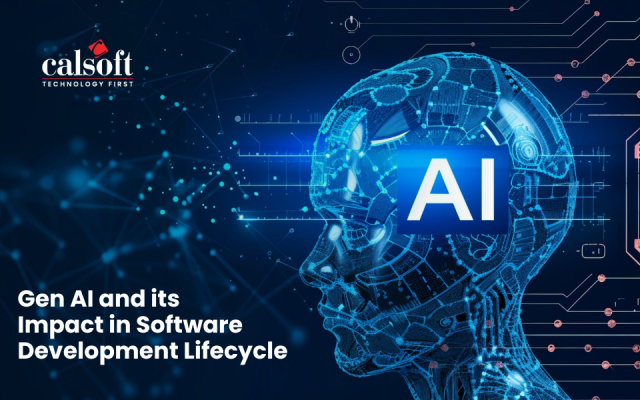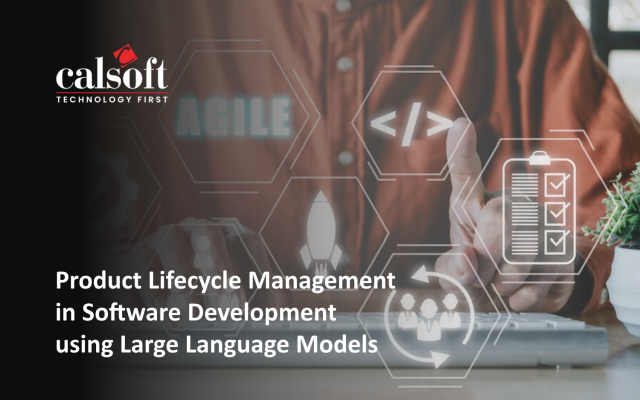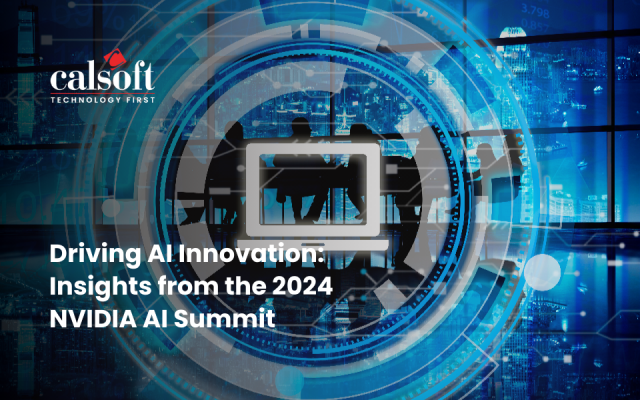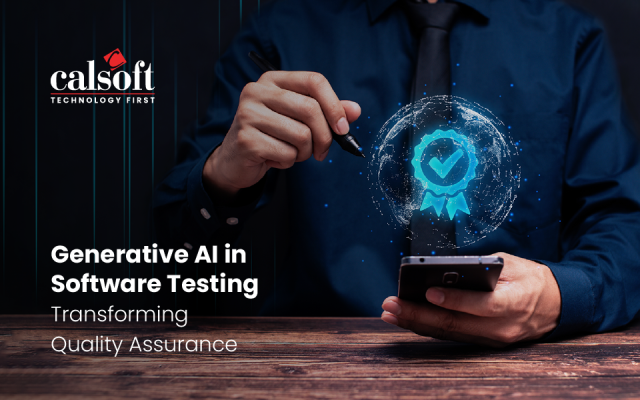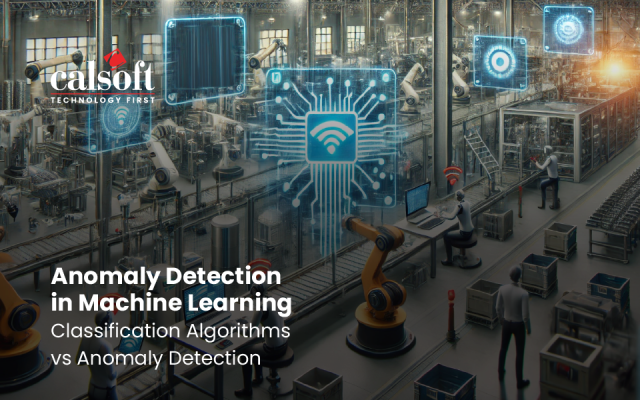When the film ‘Back to the Future’ was released, impressive tech such as flying cars, waste-fueled automobiles, and water hoverboards featured in the “future” of the film were widely thought to be a certainty in real-life 2015. However, not many had predicted the extensive use of smartphones and how incredibly connected they would make the world. The sleek “Swiss Army Knife” of technology transformed the world and connected consumers to businesses like never before.
To cater to the increased number of endpoints between customers and the business, businesses became software-driven organizations, accessible 24/7. Digitization and unprecedented technological innovation have stemmed from the need to stay ahead of the curve. It has led to businesses leveraging artificial intelligence (AI) for autonomous information technology.
For the last few years, the industry has seen a growing trend of looking at AI through the lens of business capabilities, as a means to an end, rather than as core technology for game-changing projects. The business aspects that AI enhances can be broadly categorized as – automating processes, gaining insights with data management & analysis, and engaging with target audiences, customers, and employees. The following are notable use cases within these:
1. AI for robotic process automation (RPA)
RPA supplemented with AI guarantees a massive reduction in time by automating tedious & repetitive tasks, streamlining workflows, eliminating process blockers, and increasing observability to rapidly manage dependencies. It limits manual intervention, thus cutting out human error, sky-rocketing productivity, and increasing overall efficiency. AI-powered RPA can transform processes in an exhaustive range of fields such as production, supply chain management & logistics, human resources, financial services, healthcare, and more. What makes RPA great for modern businesses is its flexibility & user-friendliness. It adapts to unconventional workflows, scales as your business does, and is straightforward enough to be accessible to non-technical resources as well.
2. Smart test automation – AI spidering and image-based automation testing
In the late 1970s, programmers newly minted as primarily software testers, used script-based testing tools to program the automation of programs running on mainframes. Microcomputers and GUI-based desktops brought with them record and replay tools. These allowed rapid test creation, accurate checking, and a significant reduction in the lines of code. Soon after, open-source tools and community-driven frameworks emerged, leading to the commercialization and standardization of test automation.
However, automated tests failed frequently, and the number of “false positives[DG1] ” generated required test engineers to review the results and edit or repeat that entire process until the test executed as expected. Model-based test automation (MBTA), a considerable improvement, enabled testers to work with chunks of code that can be combined, repurposed to create tests. But modern use cases require more intelligence than just efficiency, given that interfaces have to increasingly interact with humans and perform smart operations ranging from bringing convenience to the mundane to diagnosing lung cancer in a non-invasive, inexpensive way.
• AI Spidering
AI-powered test automation significantly expands test coverage by intelligently exploring usage paths that humans usually don’t think of. AI Spidering goes a step further than that. A relatively new approach to AI-driven test automation, AI Spidering can completely automate writing test scripts with advanced machine learning (ML) based tools to crawl the application and explore permutations to catch potential bugs.
As the AI Spidering tool crawls, it collects information about the application being built and trains your ML models for expected patterns of your application.
• Visual Validation test automation
Machine Vision (MV) is an image-based, visual pattern recognition technique. It is being widely adopted for image-based testing using automated visual validation tools. Visual validation is ensuring that the GUI that users interact with is visually perfect, and appears correctly on the user’s device. This method of testing enables visual validation tools to spot inconsistencies and differences that humans would usually miss. For example, if a UI element is hidden under another one, it is likely impossible for human testers to catch this error. However, visual validation tools can easily hunt down such bugs. Given the large number of customer-facing applications, leveraging visual testing to ascertain the accuracy of the UI in terms of the color, shape, position, and size is vital to the success and user-acceptance rate of the application.
3. Intelligent consumer analysis and engagement
Ever since the world has become a global marketplace where consumers from anywhere can benefit from services from anywhere with ease, customer acquisition and retention have become increasingly difficult. Brands are striving to build deep, long-lasting, and more fruitful relationships with consumers, with the ultimate aim of converting them to brand loyalists.
AI makes this a breeze. Contrary to the “AI is magic”, school of thought, AI is simply logic built around data and the ability to analyze that data. AI and humans have completely distinct areas of expertise. AI can help in these three areas primarily – picking up straightforward, time-consuming tasks to save marketers’ [DG2] time, and helping brands capture more ROI.
• AI for straightforward, routine tasks
Once you feed data to your AI-driven systems, and design them to manipulate that data, AI will work wonders for your marketing and branding efforts by tackling narrow tasks such as anomaly detection, email spam identification, analysis of trends, potential opportunity identification, and more. But AI isn’t “creative” like humans are. This is why AI is leveraged for routine, repetitive tasks that require time, which adds real value to the marketing team by freeing up the team’s time. The team can then focus on creative tasks such as brainstorming, creative strategizing, empathizing & understanding what drives need, and creating content from scratch.
• AI-based tools for market intelligence & engagement
AI-driven, automated systems aggregate data from multiple, heterogeneous sources, analyze it to fetch valuable insights, and act upon these insights in targeted ways. The open secret behind brands that have mastered customer engagement is often applying an AI-based solution to their pre-existing customer relationship and data management interfaces. This helps to ensure better end-user assessment, selection of the right strategy, and more actionable leads.
ML can also predict churn and point out at-risk customers. With an AI-powered intervention, businesses can understand the pitfalls of their strategy, zero in on opportunities to create maximum impact, and fine-tune campaigns accordingly. ML can also determine how your target audience interacts with the brand communications that they view across media channels. Subsequently, these insights can drive the creation of targeted communication & messaging, personalized content, or sales campaigns that align with the target audience’s behavior, past digital activity, purchasing history, and buying patterns. Such customization has a much higher chance of achieving the desired outcomes.
Given that each customer interaction is an opportunity to delight customers and retain their loyalty, brands have taken up AI-driven customer service tools. These smart tools enhance interactions to not only offer highly personalized solutions and rapid issue resolution, but also save your customer service team’s time and expertise for more complex problems. Also, as skilled as your customer success team is, it cannot be present 24*7 without burning a hole in your wallet. This is where AI-powered intelligent chatbots come into the picture. They can offer expert solutions to routine requests and queries of your customers in real time, thus dealing with customer interactions that would have been only time consuming, and passing on to your customer experience teams only those interactions where human skills come into play.
Additionally, AI is being used for cognitive talent acquisition. Businesses are keen on creating an employment brand, that attracts the best global talent. AI aids in the creation of highly-focused outreach campaigns to educate and attract just the right candidates.
4. Automated compliance and risk assessment & management
The current business landscape powered by technology and the Internet is a boon to businesses, but the myriad opportunities that it presents can be marred by unmitigated threats and security risks. Although compliance guidelines such as the GDPR are in place, adherence is tricky, noncompliance carries dire consequences, and risk-proofing cannot be left to chance. To avoid the intervention of third-parties in attempts of verifying and complying with numerous, complex regulations, businesses can leverage AI-based tools that automate risk audits and compliance adherence. These tools completely automate manual compliance and audit tasks, analyze for presumably undetected patterns of fraud, circumvent unsavory elements & threats, and identify any lapses in mandatory regulatory processes.
AI-enabled intelligence analyzes large amounts of historic and computational data and suggests enhancements to fortify vital controls. Most importantly, most failures are detected in real time and concerns are flagged immediately so that response teams can take corrective action before it is too late.
AI in automation has transported humanity to the next level of innovation. It has generated exciting opportunities for boosting productivity and efficiency. It is still not too late to get on board before the AI train leaves the station.
Calsoft recognizes the potential of business transformation with AI in automation. We support enterprises with strategy consulting, project implementation, and managed analytics with AIOPs, AI workload management, AI platform & web development, and more. Delve deeper into our data & analytics capabilities, here.

